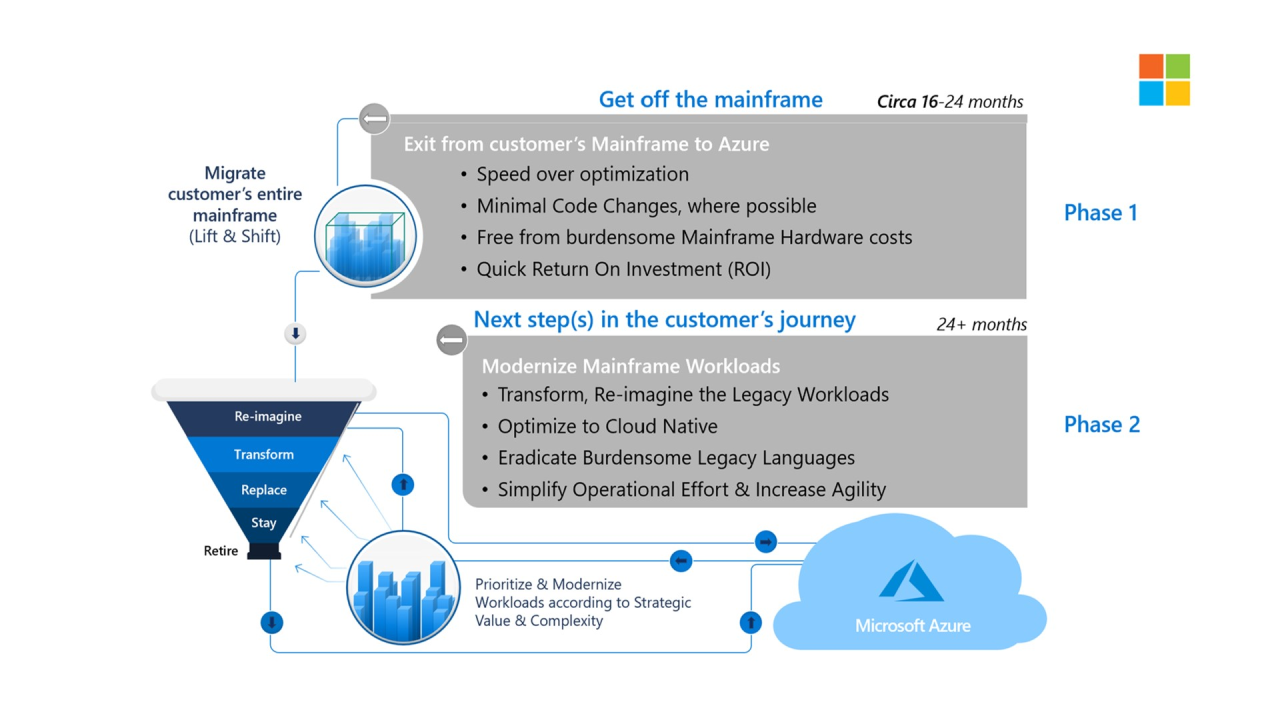Mainframes are powerful and reliable systems that support many critical business processes. However, they also pose significant challenges for modernization, such as high costs, complex architectures, and legacy skills. Many organizations are looking for ways to transform their mainframe applications and data to take advantage of our Azure cloud, but they may not know where to start or how to manage the risks and costs involved.
In this article, I will explore a phased approach for mainframe transformation that can help you achieve your goals with minimal disruption and maximum value. The first phase is focused on saving money by optimizing your mainframe environment and reducing its footprint. The second phase is focused on transforming your applications to cloud native applications that can leverage the benefits of the cloud, such as scalability, agility, and innovation.
Phase 1: Save Money
The first phase of mainframe transformation is to save money by optimizing your mainframe environment and reducing its footprint. This can be done by applying several strategies, such as:
- Identifying and retiring unused or redundant applications and data.
- Consolidating and rationalizing your mainframe infrastructure and software licenses.
- Offloading or migrating some of your mainframe workloads to cheaper and more flexible platforms, such as Azure Cloud.
- Modernizing your mainframe development and operations processes with DevOps and automation tools.
- Replatforming your mainframe applications to run on cloud platforms, such as Azure, with minimal changes.
By applying these strategies, you can reduce your mainframe costs, free up resources, and prepare your mainframe applications and data for the next phase of transformation.
Phase 2: Transform Applications
The second phase of mainframe transformation is to transform your applications to cloud native applications that can leverage the benefits of the cloud. This can be done by applying several strategies, such as:
- Refactoring your mainframe applications to use cloud services, such as databases, messaging, or analytics, and adopt cloud design principles, such as microservices, containers, and serverless.
- Rebuilding your mainframe applications from scratch using cloud native technologies and frameworks, such as Java, Spring Boot, or others.
- Replacing your mainframe applications with commercial off-the-shelf (COTS) or software as a service (SaaS) solution that can meet your business needs.
By applying these strategies, you can transform your mainframe applications to cloud native applications that can scale, adapt, and innovate faster and better than before.

Conclusion
Mainframe transformation is not a one-size-fits-all solution. It requires a careful assessment of your mainframe environment, your business objectives, and your risk appetite. A phased approach like this can help you achieve mainframe transformation in a manageable and cost-effective way. By saving money in the first phase and transforming applications in the second phase, you can unlock the full potential of the cloud and modernize your mainframe legacy.
If you would like to learn more about this topic, or discuss your ideas, please contact the Microsoft team at mainframetransformed@microsoft.com.

